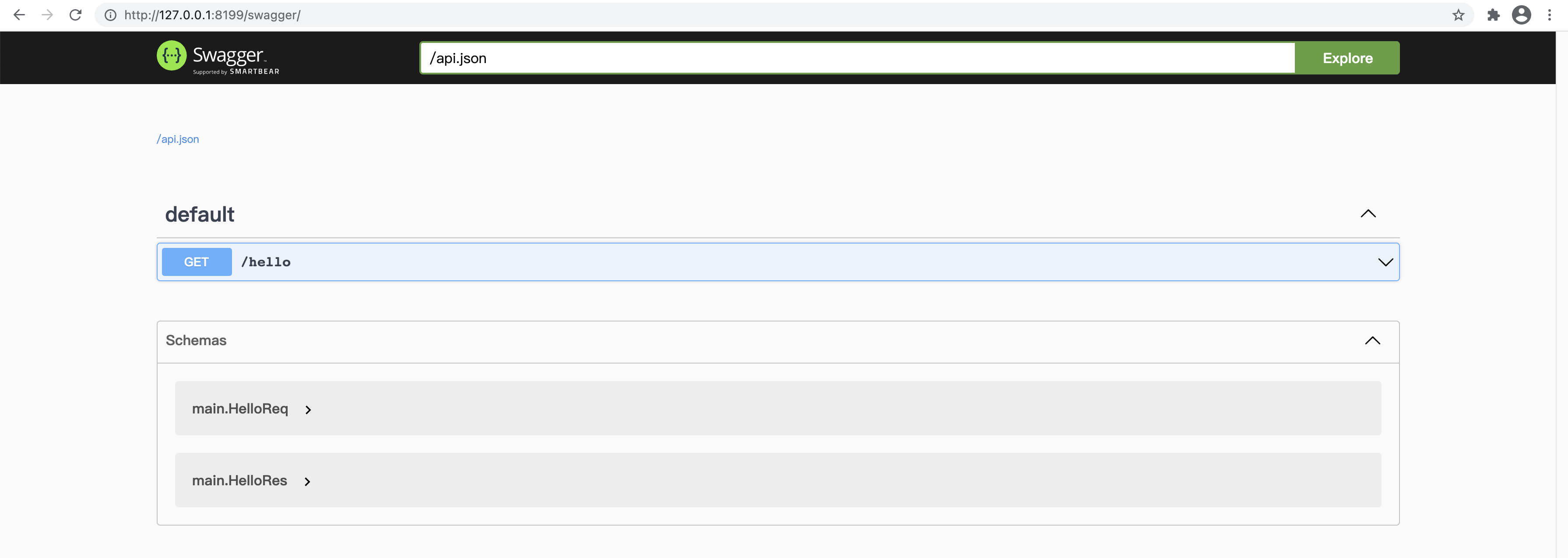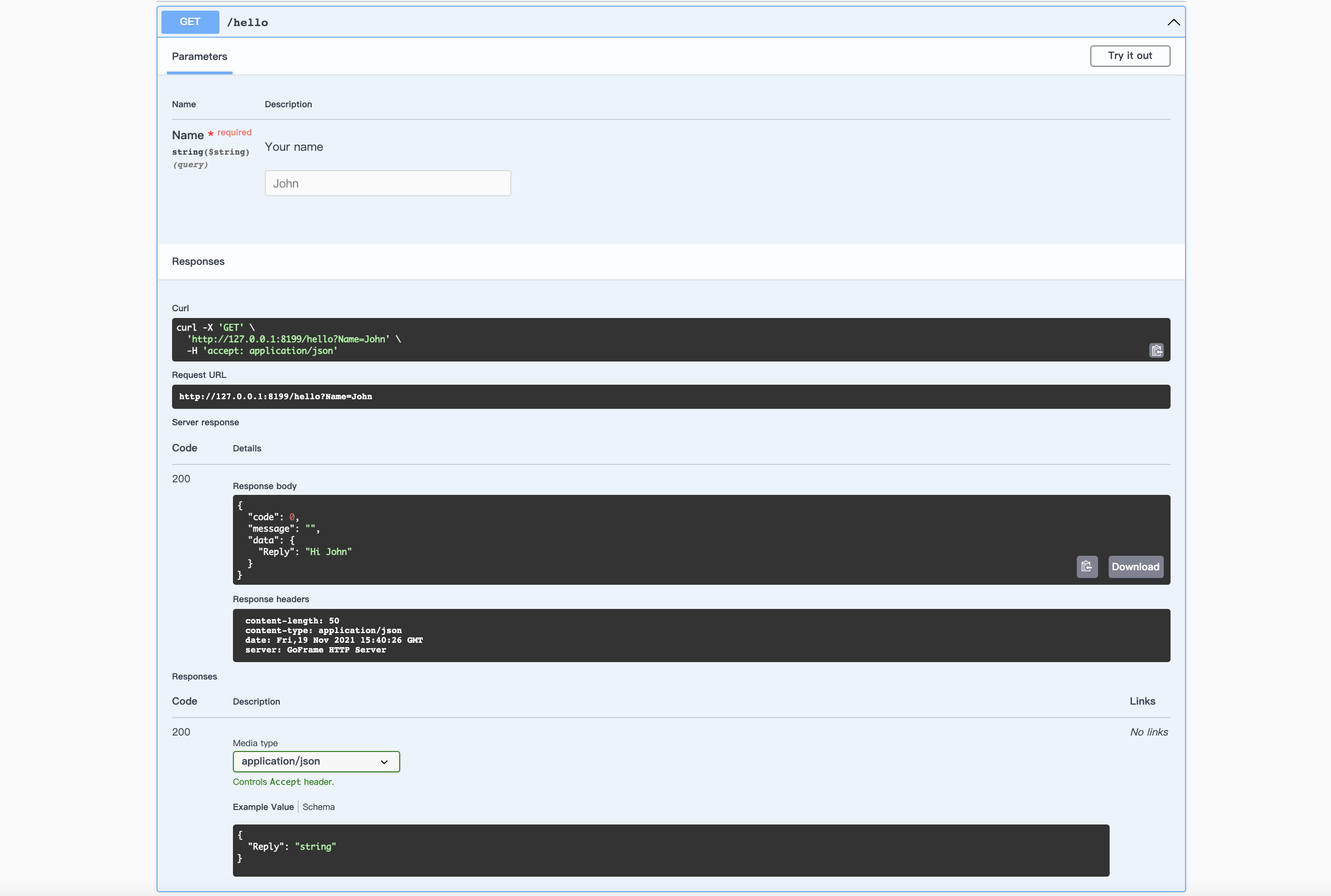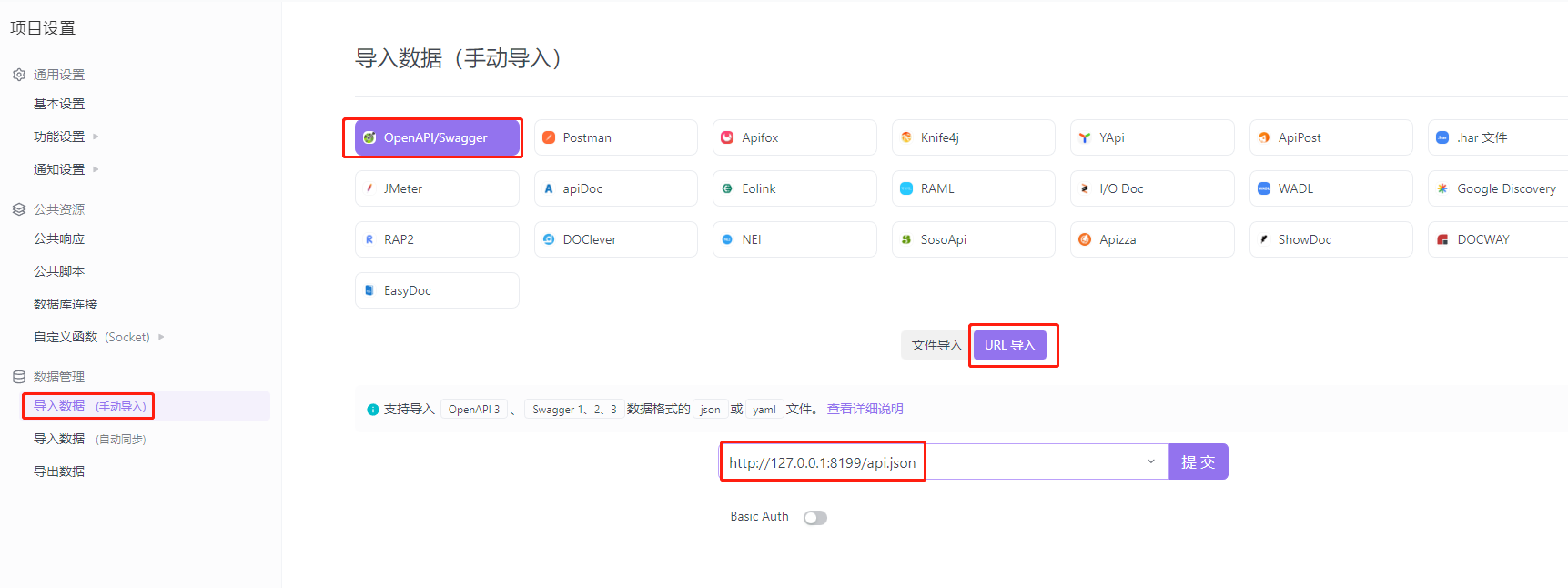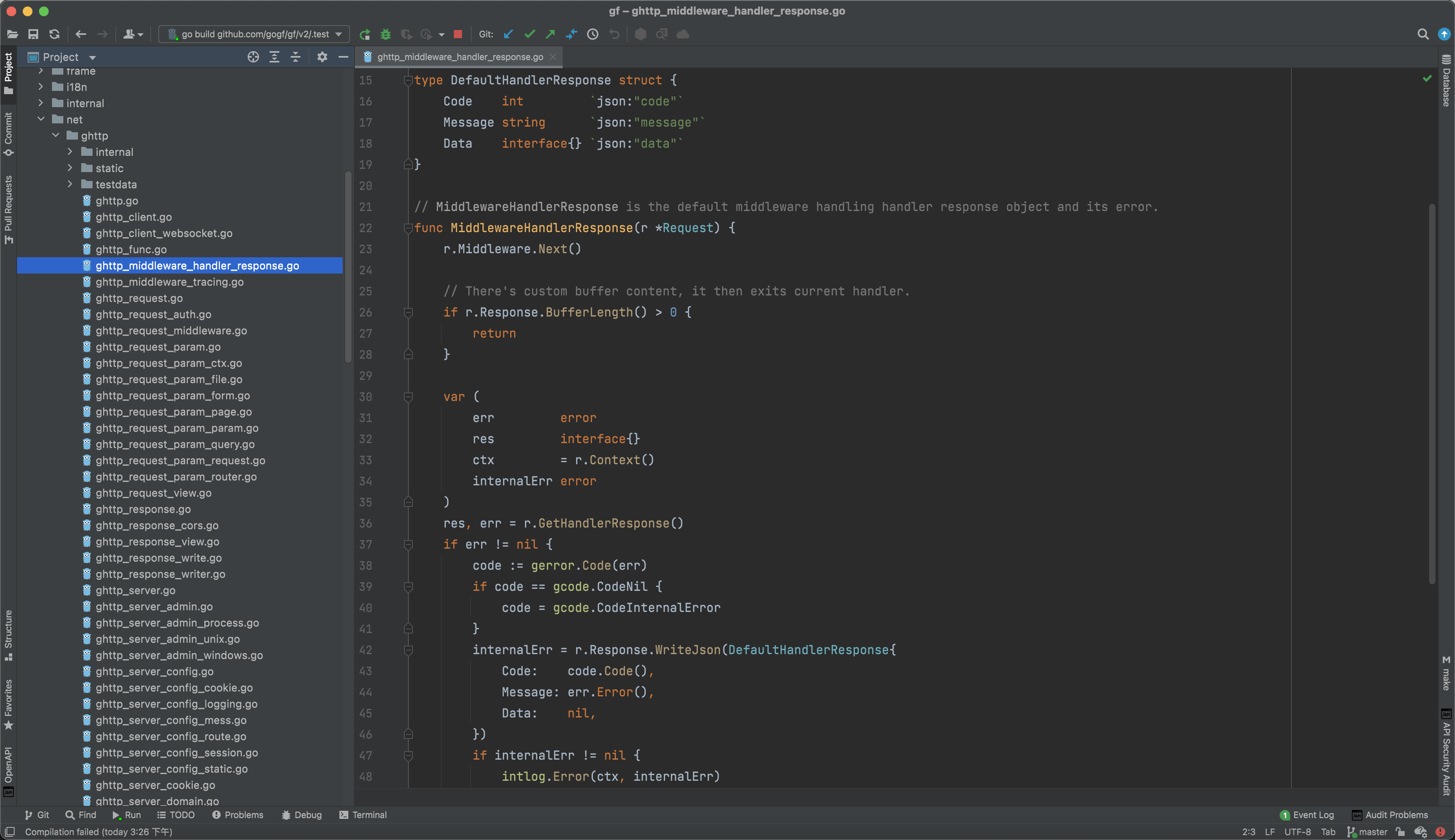Configuration File
Here we use a YAML configuration file: config.yaml
server:
address: ":8199"
openapiPath: "/api.json"
swaggerPath: "/swagger"
Sample Code
Let's start with a simple Hello example:
package main
import (
"context"
"fmt"
"github.com/gogf/gf/v2/frame/g"
"github.com/gogf/gf/v2/net/ghttp"
)
type HelloReq struct {
g.Meta `path:"/hello" method:"get"`
Name string `v:"required" dc:"Your name"`
}
type HelloRes struct {
Reply string `dc:"Reply content"`
}
type Hello struct{}
func (Hello) Say(ctx context.Context, req *HelloReq) (res *HelloRes, err error) {
g.Log().Debugf(ctx, `receive say: %+v`, req)
res = &HelloRes{
Reply: fmt.Sprintf(`Hi %s`, req.Name),
}
return
}
func main() {
s := g.Server()
s.Use(ghttp.MiddlewareHandlerResponse)
s.Group("/", func(group *ghttp.RouterGroup) {
group.Bind(
new(Hello),
)
})
s.Run()
}
Copy this code and let's run it to see what happens. The terminal will output the following information:
2021-11-19 23:31:35.277 25580: http server started listening on [:8199]
SERVER | DOMAIN | ADDRESS | METHOD | ROUTE | HANDLER | MIDDLEWARE
----------|---------|---------|--------|------------|-----------------------------------------------------------|--------------------
default | default | :8199 | ALL | /* | github.com/gogf/gf/v2/net/ghttp.MiddlewareHandlerResponse | GLOBAL MIDDLEWARE
----------|---------|---------|--------|------------|-----------------------------------------------------------|--------------------
default | default | :8199 | ALL | /api.json | github.com/gogf/gf/v2/net/ghttp.(*Server).openapiSpec-fm |
----------|---------|---------|--------|------------|-----------------------------------------------------------|--------------------
default | default | :8199 | GET | /hello | main.(*Hello).Say |
----------|---------|---------|--------|------------|-----------------------------------------------------------|--------------------
default | default | :8199 | ALL | /swagger/* | github.com/gogf/gf/v2/net/ghttp.(*Server).swaggerUI-fm | HOOK_BEFORE_SERVE
----------|---------|---------|--------|------------|-----------------------------------------------------------|--------------------
As you can see, in addition to our business route, the Server has automatically registered two routes for us: /api.json and /swagger/*. The former is an auto-generated API documentation based on the standard OpenAPIv3 protocol, and the latter is an auto-generated SwaggerUI page for developers to view and debug. These two features are disabled by default, and developers can enable them using the openapiPath and swaggerPath configuration options in the previous example.
API Documentation
The API documentation is generated through the OpenAPIv3 protocol, typically requiring corresponding UI tools to view it, at the address: http://127.0.0.1:8199/api.json
Since OpenAPIv3 is a standardized API definition protocol, developers can do many things based on the protocol content, such as custom UI display, client code generation, protocol conversion, etc.
SwaggerUI
Let's take a look at this SwaggerUI page: http://127.0.0.1:8199/swagger/

There's only one route address and its corresponding input and output structures here. Of course, this is just a simple example; in a real project, you can make the page more colorful through some configuration.
Let's continue to do an API test on this page:

Yes, the API returned a Json content with a fixed data format, but you can see the data is the return result we need.
Note: The latest version of the SwaggerUI page no longer supports API testing features. If you need this functionality, you can customize SwaggerUI (refer to API Document - Custom UI), or import the API file api.json into third-party tools (such as apifox) for testing:

Return Middleware
Wait a minute, did we miss something? Yes, we used a middleware provided by a Server component here. What is it used for? Let's take a look at its method definition:

Yes, when we do not provide a custom return data format middleware, it uses a default middleware to handle our requests and returns a default data format.